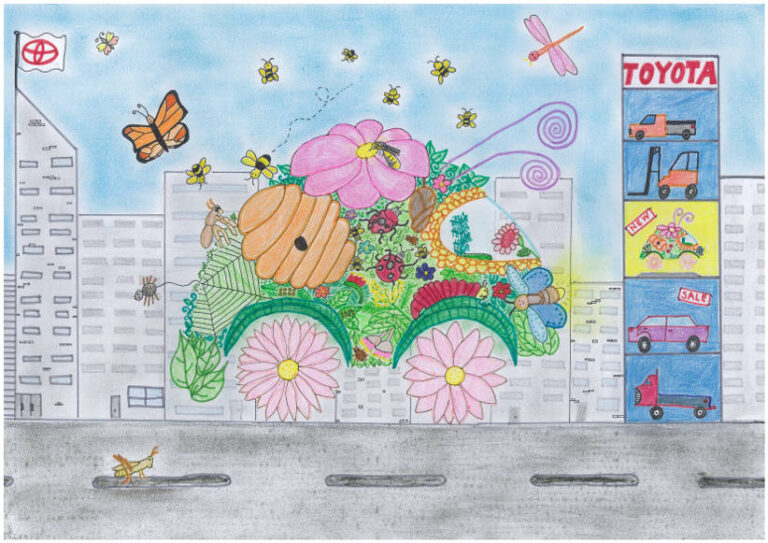What does the car of the future look like through the eyes of Aussie kids? This is a great question to ask because kids don’t have the same pre-conceptions as adults. Their imaginations can be free to improve on the traditional designs and constraints.
And it’s the question Toyota posed in its annual Dream Car Art Contest and the answers came in more than 4700 imaginative, colourful and inspiring creations that addressed what kids of today see as some of the biggest issues facing society.
Eight-year-old West Australian Claudia Fields, whose Nature Insect Car was judged the Australian winner, sought to address what she saw as a lack of colour, nature and biodiversity in our cities.
“My favourite thing is insects and I thought what if we could create a car with insects and flowers?” Claudia said.
“The cities don’t have any lovely colours – they are just grey and white and black so this car provides lots of colour and scents.
“And it provides a safe home for insects and bees that are very important to our world because they pollinate fruit, flowers and vegetables to clean the air and bring nature and greenery to concrete cities,” she said.
Claudia’s thinking behind her drawing was exactly the sort of inspired creativity that the contest aims to encourage, with other finalists addressing societal issues including homelessness, waste and recycling, and bringing young and old-aged communities together.
Toyota partners with not-for-profit education resources organisation Cool Australia and Faber Castell for the contest, and Cool Australia Founder and Managing Director Jason Kimberley said it was a great way to inspire kids to think about the world they live in.
“Children these days are far more aware of the issues that surround them, and encouraging them to really use their imaginations and creativity to help address some of those problems can never start too early,” Mr Kimberley said.
“These are tomorrow’s designers, engineers, entrepreneurs and innovators and the more we can inspire their creative thinking and expression to develop solutions to the issues we face, no matter how fanciful, the better the future looks,” he said.
Toyota Australia’s Chief Marketing Officer Wayne Gabriel said he congratulated Claudia on her outstanding artwork, and it was great to see the extremely imaginative entries that not only addressed societal issues but also the challenges facing mobility for the future.
“It was really interesting to see the way so many ideas incorporated solar energy and even hydrogen fuel cells – a technology Toyota is already using in the Mirai currently being trialed in Australia – as clean, environmentally-sustainable power sources for their cars,” Mr Gabriel said.
“Under Toyota’s Environmental Challenge 2050 program, we are aiming to reduce vehicle carbon emissions to zero globally to ensure a long and sustainable future for personal mobility and it’s great to see the youngest generation of Australians really caring about their, and our, impact on the planet.
“Through programs like the Dream Car Art Contest, we hope to be able to continue to inspire that interest and action so we can all contribute to a better future,” he said.
To view all the creative works of the nine Australian finalists visit
https://www.toyota.com.au/dreamcar









